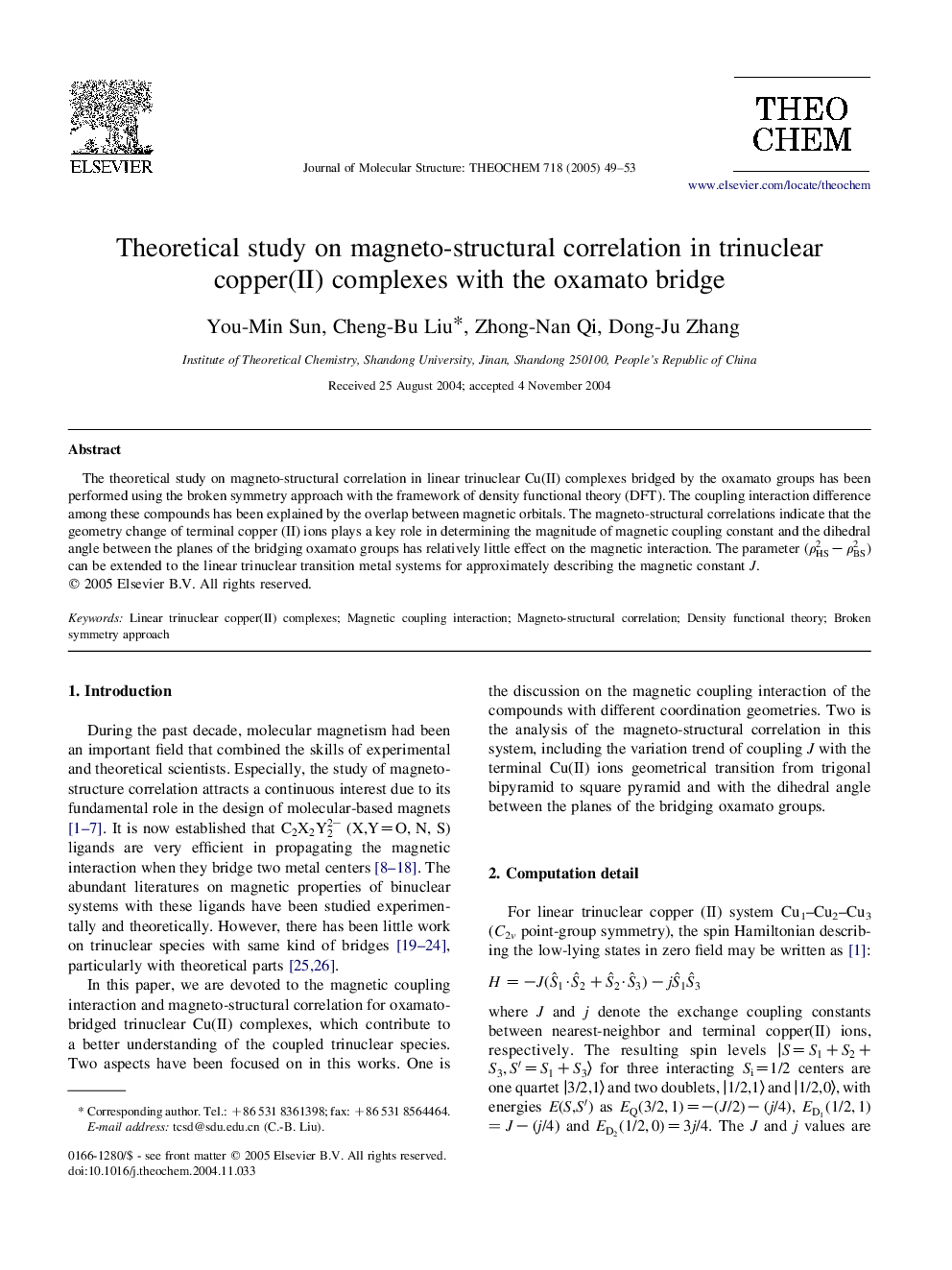| Article ID | Journal | Published Year | Pages | File Type |
|---|---|---|---|---|
| 9591457 | Journal of Molecular Structure: THEOCHEM | 2005 | 5 Pages |
Abstract
The theoretical study on magneto-structural correlation in linear trinuclear Cu(II) complexes bridged by the oxamato groups has been performed using the broken symmetry approach with the framework of density functional theory (DFT). The coupling interaction difference among these compounds has been explained by the overlap between magnetic orbitals. The magneto-structural correlations indicate that the geometry change of terminal copper (II) ions plays a key role in determining the magnitude of magnetic coupling constant and the dihedral angle between the planes of the bridging oxamato groups has relatively little effect on the magnetic interaction. The parameter (ÏHS2âÏBS2) can be extended to the linear trinuclear transition metal systems for approximately describing the magnetic constant J.
Related Topics
Physical Sciences and Engineering
Chemistry
Physical and Theoretical Chemistry
Authors
You-Min Sun, Cheng-Bu Liu, Zhong-Nan Qi, Dong-Ju Zhang,
